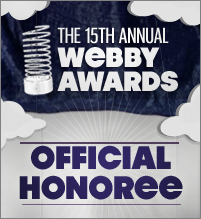
In this pilot in the series on converting online sales, we’re exploring one of the three most effective ways to move your website and blog visitors into your customer fold: educational marketing.
You probably developed or are interested in developing an online presence for many reasons. Customer service and support. Brand and product promotion. Relationship-building. And because your competition is there. But you also created a blog, website and pages on social networks to sell your company’s products and/or services. You won’t accomplish that goal by simply posting pages of pretty pictures and glowing text descriptions. You need a conversion plan. We’re going to cover three concepts that have worked for countless businesses. The first is educational marketing.
Why Do They Show Up?
Your visitors want information. They have problems and they’re seeking solutions. They want their personal and professional lives to be more productive or fun, simpler or safer or richer or more successful. Education – broad, solution-based content — can help them get there. Your visitors will see you as an expert in your field, one who wants to help people, gratis, without constantly pitching products. This approach will undoubtedly have positive impact on many, and they may return as customers.
Educational Marketing Increases Conversion
Websites that have high bounce rates (visitors drop in but exit quickly) don’t bring in sales. Keep people clicking. Make it clear that they can get answers to their questions.
Other ways to increase their time with you include:
- Build anticipation early. Use teasers. Excerpt recommendations attesting to your helpfulness. Post a list of ten common questions and link to answers. Let your audience know from the very start that you’re there to help. Place prominent navigational links on your home page.
- Vary presentation. Some visitors prefer video. Others learn best through images or infographics or lists. Many are readers, and prefer text. Well-designed web pages use all of these formats.
- Provide useful educational content. Informational blog posts, updates, tweets, etc. can educate visitors about your company and products, but don’t include them frequently. Sites that provide general, helpful information (How To…, 10 Ways To…, Why Your Current Solution Isn’t Working, etc.) have higher retention rates. A furniture business might teach about design and quality, and provide shopping tips. An attorney who specializes in disability issues should educate visitors about the process. An HVAC contractor could write blog posts on winter maintenance procedures.
Educational content is a powerful conversion tool. It builds visitors’ confidence in you and your business, and helps them understand that you take their needs seriously. Let your navigational design and calls to action eventually lead visitors to marketing-oriented or shopping pages.
Educational Marketing Design – A Subtle Art
Creating the right mix of altruistic educational content and promotional materials requires subtlety, careful planning and awareness of your audience and its needs. Engage, learn your prospect’s pain points, share your knowledge – and then sell. Do it in that order, and your conversion rates will improve.

